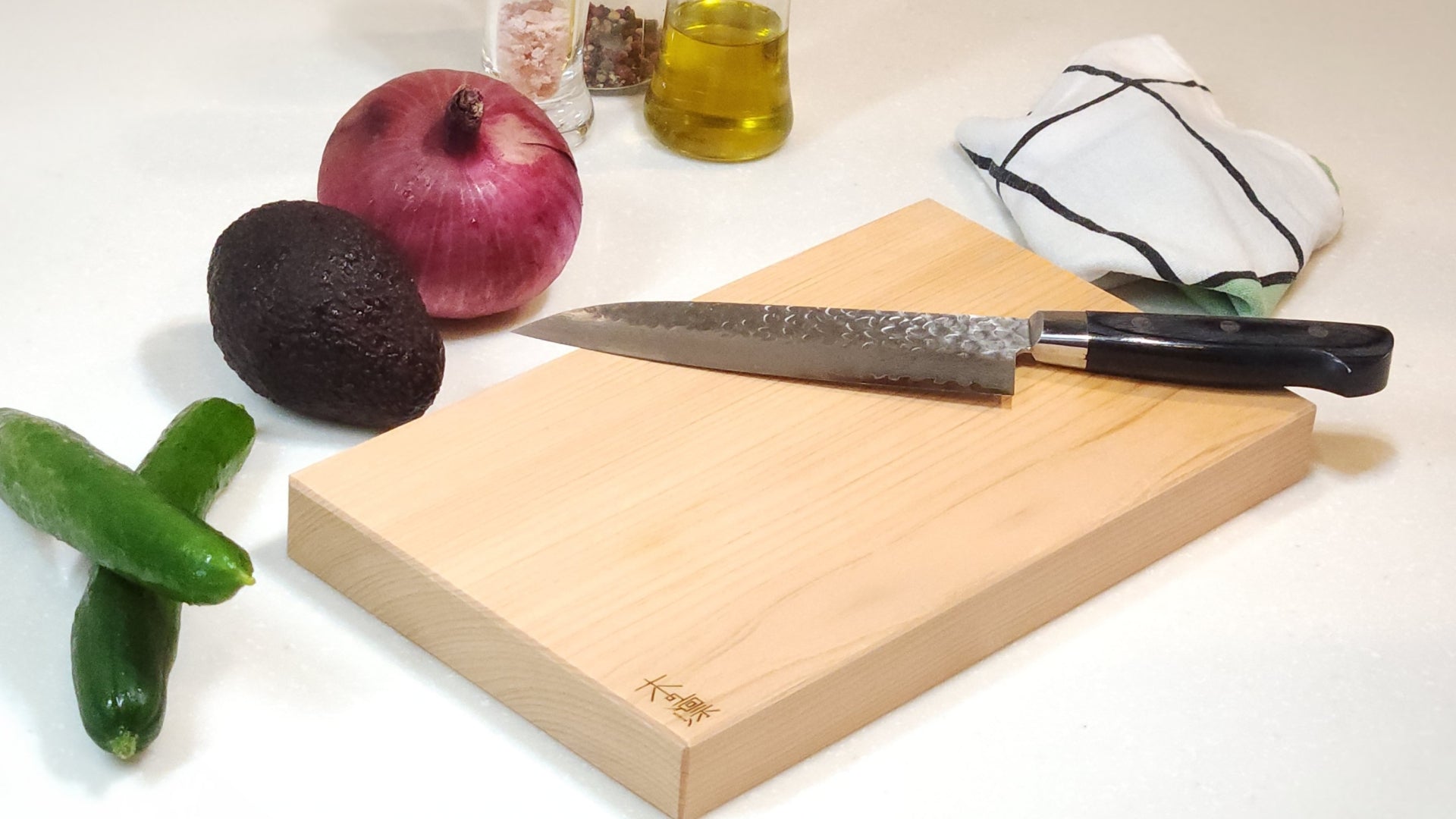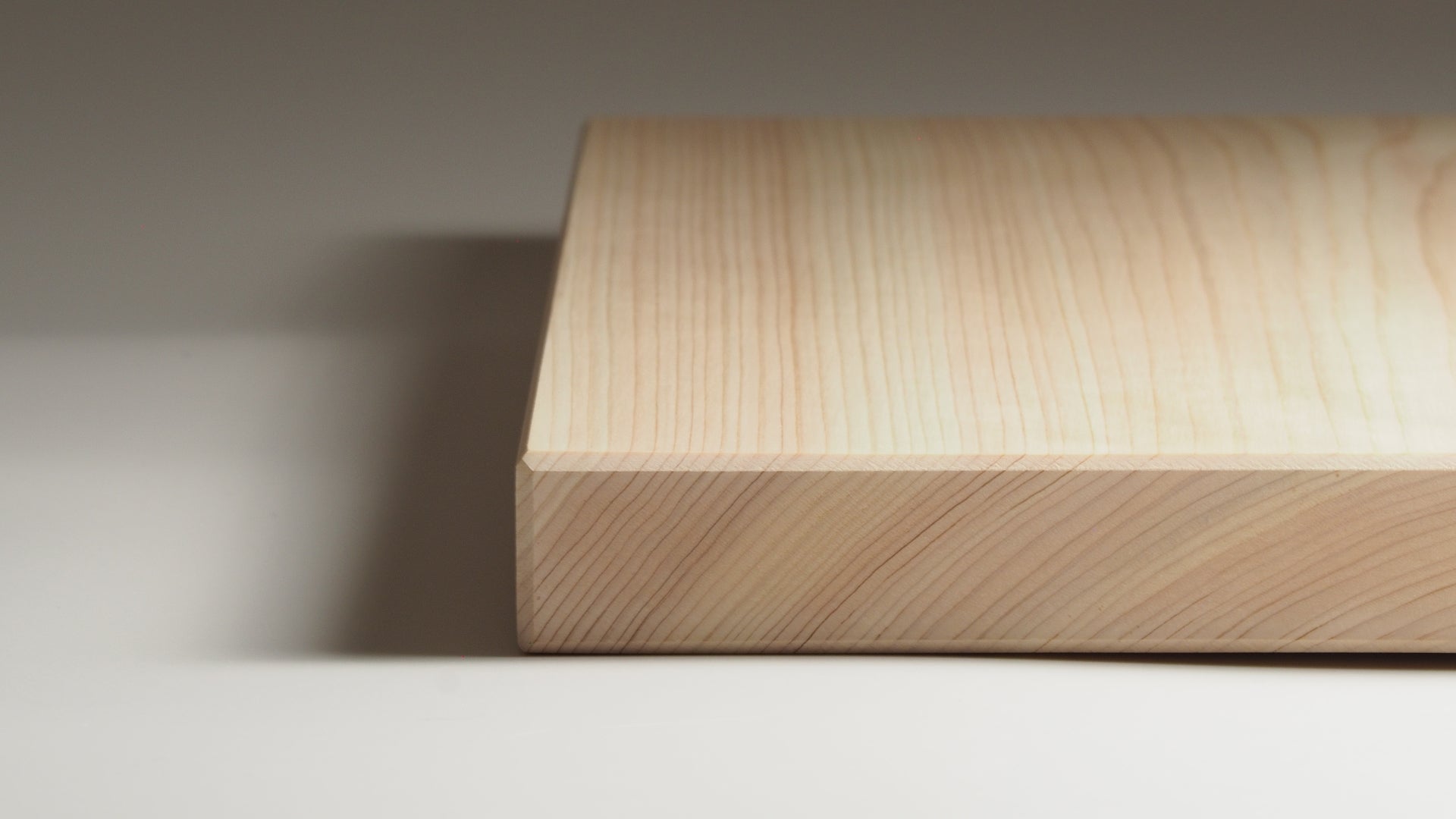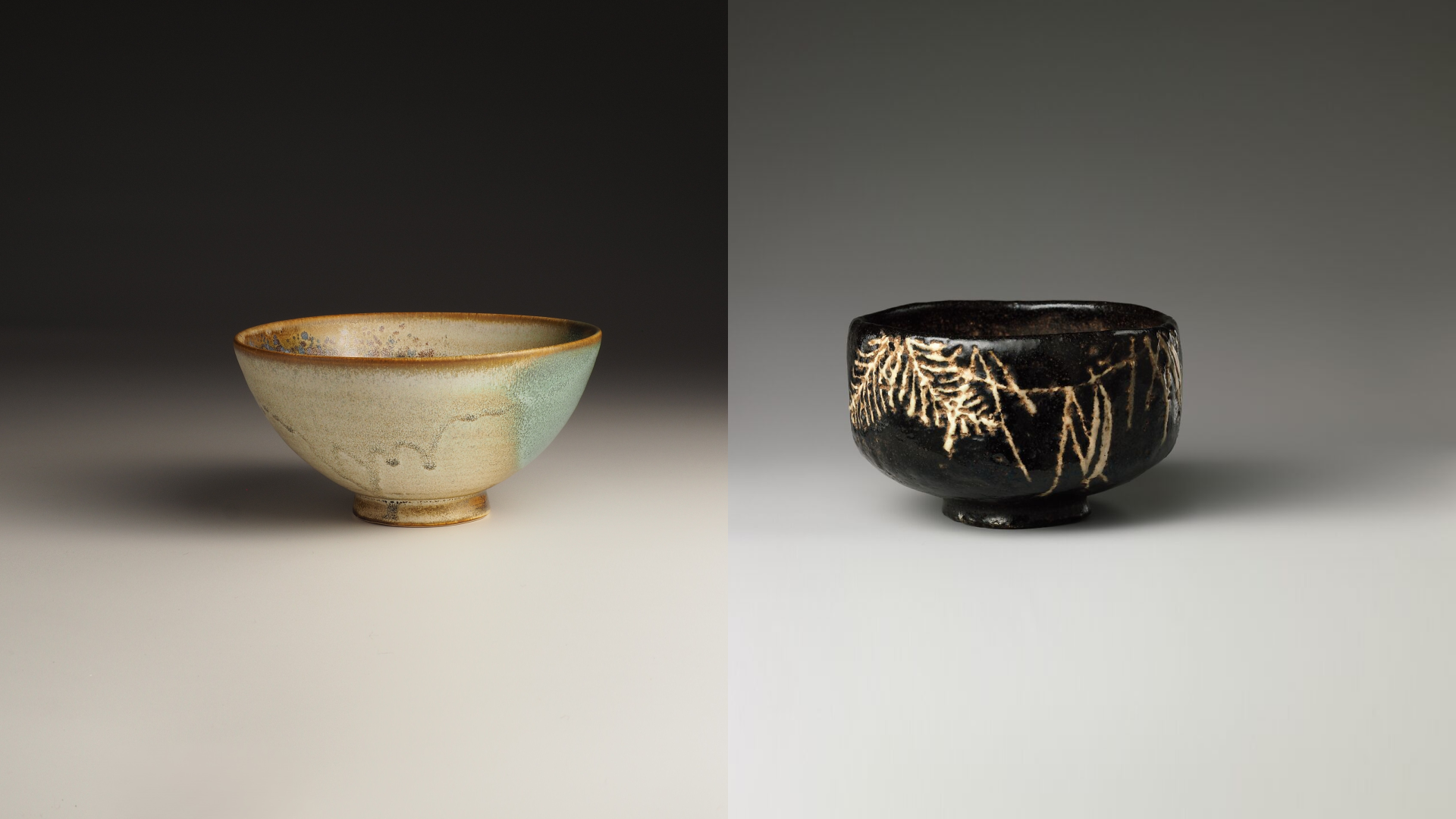
Cutting Board Safety: What You Need to Know to Keep Your Kitchen Healthy
When it comes to cutting board safety, small habits make a big difference, as a well-maintained board helps prevent cross-contamination and keeps your kitchen in line with proper food safety standards.
Whether you prefer wood, plastic, or bamboo, the key is to understand that food safety cutting boards are essential tools in your kitchen, and it’s vital to know how to choose and maintain them to protect your health.
- The Quick Guide to a Safer Cutting Board
- Which Cutting Board Material is Really Safer?
- How to Properly Clean and Sanitize a Cutting Board
- Busting the Biggest Cutting Board Myths
- How to Prevent Cross-Contamination Without Complicating Your Cooking
- When to Replace or Repair Your Cutting Board
- Your Cutting Board Safety Checklist
- FAQs About Cutting Board Safety
The Quick Guide to a Safer Cutting Board
Before we get into the specifics, let’s take a quick look at the essential routines every home cook should follow.
These include keeping certain foods on their own dedicated boards, cleaning and sanitizing after each use, and making sure your board is in good condition so it won’t harbor hidden bacteria.
The 3 Golden Rules for Every Home Cook
-
Use separate cutting boards for different foods.
The ideal approach is to use separate cutting boards for different food types: one for raw meat and seafood, another for fruits and vegetables, and a third for bread or cooked items.
This simple step significantly reduces the risk of cross-contamination. -
Clean and sanitize after every use.
Bacteria multiply quickly, so washing and disinfecting your board immediately after cutting is essential.
This becomes even more important when it’s not possible to have multiple boards as explained in point 1, and you are working with only one cutting board. -
Inspect your board regularly.
Deep grooves and cracks can trap germs.
The ideal solution is to replace the board or, in the case of a wooden cutting board, resurface it when the surface becomes too worn.
The Most Common Mistake That Causes Cross-Contamination
The most frequent cause of contamination is reusing a board for ready-to-eat foods after it has been used for raw meat, fish, or poultry without proper cleaning.
Even if it appears clean, harmful bacteria can hide in knife marks, posing a serious risk to your health therefore proper sanitation is vital.
The Best Quick-Fix Cleaning Method
When time is short, a simple yet effective routine can help maintain your cutting board safety.
Wash the board with hot, soapy water immediately after use, rinse thoroughly, and dry with a clean towel to prevent moisture from fostering bacterial growth.
For wooden boards, a diluted vinegar spray is a safe and gentle sanitizer that preserves the surface while ensuring proper hygiene.
These quick methods keep your board ready for the next task without compromising cleanliness.
Which Cutting Board Material is Really Safer?
When considering cutting board safety, the material you choose plays a big role in hygiene, durability, and ease of cleaning.
While there is no one-size-fits-all answer to what is the best cutting board, understanding the strengths and weaknesses of each option will help you make a choice that suits both your cooking style and your food safety standards.
Wood vs Plastic: The Real Winner
The long-debated question, are wood cutting boards safe or should you choose plastic, does not have a simple yes or no answer.
Some types of wood, like Japanese Hinoki for example, have natural antibacterial properties and, when cared for properly, can be highly sanitary.
Wooden cutting boards, however, require more maintenance and cannot be put in the dishwasher.
Plastic boards, on the other hand, are lightweight, easy to clean, and dishwasher-safe, but deep knife grooves can trap bacteria over time.
Another important concern is: do plastic cutting boards release microplastics during food preparation?
How Much Plastic Are You Eating From Your Cutting Board?
Studies show that plastic cutting boards are a significant yet often overlooked source of microplastics in our diet.
Tests reveal that chopping on polypropylene boards can release up to 71% more microplastics than polyethylene boards, with vegetables like carrots increasing the release even further.
Over the course of a year, a single person could ingest:
• 14–72 million particles from polyethylene boards (7–50 g)
• Nearly 80 million particles from polypropylene boards (around 50 g)
And that’s just from food preparation.
In total, researchers estimate the average person ingests, drinks, or breathes in between 78,000 and 211,000 microplastic particles every year.
These numbers highlight how crucial it is to carefully choose your cutting board material, while plastic offers convenience, wood may be the healthier choice in the long run.
When Bamboo, Glass, or Marble Make Sense
Bamboo is a popular eco-friendly option. It is harder than most woods, making it durable, but that hardness can dull knives faster. This is why Japanese cutting boards that are specifically made to be gentle on the blade of Japanese knives are often crafted from soft wood like Hinoki.
Glass and marble are non-porous, so they do not absorb liquids or odors, but they are not ideal for everyday chopping because they can, again, damage knife blades and may cause food to slip.
These materials make sense for specific uses, such as serving boards or pastry work, rather than daily meal prep.
What Science Says About Bacteria on Different Surfaces
Studies show that bacteria behave differently on various surfaces.
On wood, many bacteria die off naturally over time due to the material’s properties, while on plastic, they can survive longer if trapped in knife marks.
So, are plastic boards safe? Well…It depends largely on their condition.
When new or well-maintained plastic boards are safe, but worn ones should be replaced promptly.
Ultimately, choosing what is the best cutting board comes down to balancing material benefits with proper cleaning and replacement habits.
How to Properly Clean and Sanitize a Cutting Board
Good cleaning habits are essential for maintaining cutting board safety.
A board that is washed and stored correctly will last longer, perform better and help prevent cross-contamination.
Ultimately, it does not matter what material your cutting board is made of; knowing how to sanitize and care for it daily will protect both your tools and your health.
If you own a Japanese Manaita cutting board, you will find a comprehensive cleaning guide here.
Fast Daily Cleaning Routine
After everyday use, scrape off any food residue, then wash the board with hot, soapy water.
Use a dedicated dish brush or sponge to scrub the surface thoroughly, paying extra attention to knife marks where bacteria can hide. Rinse well and dry immediately with a clean towel.
If you have a hinoki wood cutting board, use warm but not boiling water. This gentle cleaning method will preserve the wood’s natural properties while keeping it hygienic.

Hinoki wood Manaita washed with soft sponge along the grain.
Deep Sanitizing for Meat and Fish Boards
When cutting raw meat, poultry, or seafood, a deeper clean is essential.
To sanitize a plastic board, use a mild bleach solution and let it sit for a few minutes before rinsing.
Dealing with wood is different.
Learning how to sanitize wooden cutting board surfaces properly is essential, so avoid bleach and instead use a mixture of white vinegar and water.
Alternatively, sprinkle coarse salt over the surface and scrub with half a lemon. These natural methods are proven to be effective in sanitizing woods like Hinoki without damaging the fibers or drying out the natural oils.
Drying and Storage Mistakes to Avoid
Never leave a cutting board soaking in water, especially solid wood cutting boards, as this can cause warping, splitting, or bacterial growth.
Wooden boards, particularly hinoki wood cutting board types, should be air-dried upright to allow moisture to escape from all sides.
Store boards in a well-ventilated area rather than a closed cabinet, as proper airflow helps maintain cutting board safety and extends the lifespan of the board.
Busting the Biggest Cutting Board Myths
When it comes to cutting board safety, there are a few common misconceptions that can lead to poor care habits or unnecessary concerns.
By understanding the facts, you can keep your boards in top condition and prepare food with greater confidence.
Are Wooden Cutting Boards Safe?
Many people still wonder whether wooden cutting boards can represent a safe choice for their kitchen. The answer is yes, provided they are cleaned and maintained properly.
Studies have shown that certain woods, such as maple and Hinoki (Japanese cypress), have natural antibacterial properties that can help reduce bacterial survival on the surface.
Proper cleaning, immediate drying, and periodic resurfacing keep wooden boards hygienic and long-lasting, making them a reliable choice for both home cooks and professionals.
Can You Put a Wooden Cutting Board in the Dishwasher?
A common misconception is that running a wooden board through the dishwasher is a safe and easy cleaning method. In reality, there is only one simple answer to this question: no.
The combination of high heat, strong detergents, and prolonged water exposure can cause wood to warp, crack, and split, reducing its lifespan and compromising hygiene. Even the natural oils in the wood are likely to be stripped away. Instead, wash your wooden boards by hand with warm, soapy water, rinse thoroughly, and dry immediately.
This will protect both the structure of the board and overall cutting board safety.
How to Prevent Cross-Contamination Without Complicating Your Cooking
As you might have noticed from the previous points, one of the most important aspects of food safety when cooking is preventing cross contamination.
By applying a few simple habits, you can keep harmful bacteria from spreading between foods without making your cooking process more complicated.
These steps work for both home kitchens and professional environments and are essential when talking about cutting board safety.
Cutting Board Color Coding, What Is It?
A straightforward way to reduce the risk of cross contamination is to use a color-coded system for your cutting boards (This works best when you can have multiple boards).
Assign one color to raw meat, another to seafood, a different one for fruits and vegetables, and one for bread or cooked foods.
This visual system makes it easier to remember which cutting boards are easily contaminated and helps prevent mixing raw and ready-to-eat items.
However, even if you have only two boards, you can still separate raw proteins from everything else, and this is a significant step toward safer food preparation.
How Restaurants Manage Multiple Boards
If you have ever wondered what cutting board do you use in a commercial kitchen, the answer often depends on a clear separation of tasks.
Professional kitchens typically use several boards, each dedicated to a single food category, and many follow the same color-coding approach recommended for home cooks above.
They also inspect boards regularly for deep cuts or wear, replacing them as soon as surfaces become difficult to clean.
This proactive system keeps food preparation efficient while maintaining high standards of cutting board safety.
Safe Handling for Raw Meat, Seafood, and Produce
When working with raw meat, seafood, and uncooked fruits and vegetables, always wash your hands before and after handling each food type.
Use separate utensils alongside your boards to avoid accidental transfer of bacteria. For example, do not use the same knife for raw chicken and salad greens without cleaning it thoroughly in between.
Paying attention to these small details will greatly reduce the risk of cross contamination and ensure your kitchen meets safe food handling practices.
When to Replace or Repair Your Cutting Board
Even with the best care, every cutting board will eventually reach the point where it needs to be replaced or restored.
Understanding the signs of wear, the expected lifespan by material, and the methods for repair will help you keep your cutting board safe while getting the most use out of it.
Signs It’s Time for a New Cuttin Board
The most obvious sign that it is time to replace a cutting board is when deep grooves, cracks, or warping make it difficult to clean, as these imperfections can trap bacteria and compromise hygiene.
For solid wood cutting boards, a surface that feels uneven or has splinters may also indicate it is no longer safe for food preparation.
Plastic boards should be replaced when knife marks become too deep to sanitize effectively or, especially in some low-quality boards, when filaments of plastic start to appear on the surface.
Lifespan by Material Type
What is the average lifespan of a cutting board? It depends on the material.
Plastic boards, even with proper care, may need replacing every few years, especially if used heavily.
Solid wood cutting boards, such as Japanese manaita, can last for decades if maintained correctly, thanks to their ability to be resurfaced.
Bamboo boards are durable but may require earlier replacement if they develop splits along the seams.
A different case is the plywood cutting board. As these are made by gluing two or more pieces of wood together, their joints are not very strong. Cheaper ones might even come apart during prolonged use, making them less durable and very difficult to resurface.
Knowing when a board has reached the end of its safe life is essential for maintaining cutting board safety.
How to Restore a Wooden Board
One of the advantages of wood is that it can be restored rather than replaced.
If your board is in good condition but has surface wear, you can use sanding cutting board techniques to remove the top layer and eliminate scratches or stains.
In professional settings, planing cutting boards is another method for refreshing heavily used boards.
Once sanded smooth, clean the board and apply food-grade mineral oil evenly over the surface.
Learning how to restore a wooden cutting board not only improves hygiene but also extends its lifespan, keeping it looking and performing at its best.
Your Cutting Board Safety Checklist
A well-maintained cutting board is essential for a safe kitchen.
Use this quick checklist to keep cutting board safety at the top of your routine:
- Use separate boards for raw meat, seafood, produce, and cooked foods (color-coding helps).
- Clean and sanitize your board after every use.
- Avoid soaking wooden boards in water.
- Dry boards immediately and store them upright in a ventilated space.
- Inspect boards regularly for cracks, deep grooves, or warping.
- Replace worn boards promptly, especially plastic ones with deep cuts or visible fibers.
- Restore solid wood cutting boards with sanding and food-grade oil when needed.
-
Choose materials like natural wood or hinoki wood cutting boards to avoid microplastics.
FAQs About Cutting Board Safety
Let’s recap some of the most important points discussed in this guide
Can I Put a Wooden Cutting Board in The Dishwasher?
No. Despite the common misconception that this might be a quick way to clean and sanitize your board, nothing could be further from the truth. High heat, strong detergents, and prolonged water exposure are all enemies of your wooden cutting board, causing it to warp, crack, and, in the case of plywood or glued boards, even split. The dishwasher also strips away the board’s natural oils. Always wash wooden boards by hand with warm soapy water, rinse thoroughly, and dry immediately.
Are Wooden Cutting Boards Safe For Raw Meat?
Yes, as long as they are cleaned and dried immediately after use. Woods like maple and hinoki have natural antibacterial properties, and with proper care, they are perfectly safe for handling raw meat.
How Long Should a Cutting Board Last?
It depends on the material and how well it is cared for. Plastic boards may need replacing every few years, while solid wood boards such as Japanese manaita can last for decades if resurfaced when needed.
Which Cutting Boards Are Easily Contaminated?
Boards with deep grooves, cracks, or warping are more likely to trap bacteria and become unsafe. Regular inspection is key to maintaining cutting board safety.
Can Choosing a Wood Cutting Board Reduce Microplastic Exposure?
Yes.
Plastic boards release millions of microplastic particles each year, up to 72 million from polyethylene and nearly 80 million from polypropylene. Switching to natural wood or hinoki boards removes this source, protecting your health and the environment.
Explore our curated collection of premium Japanese cutting boards made from solid Hinoki wood, designed for performance, durability, and to be gentle on your knife blades.



